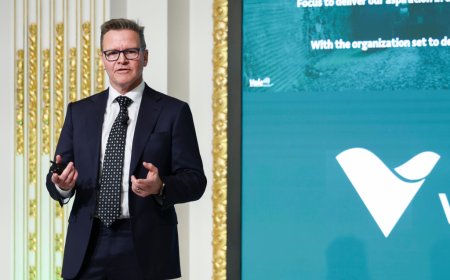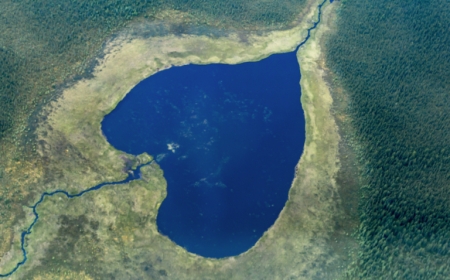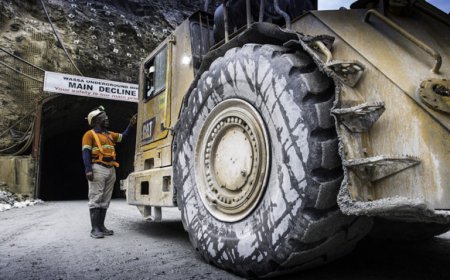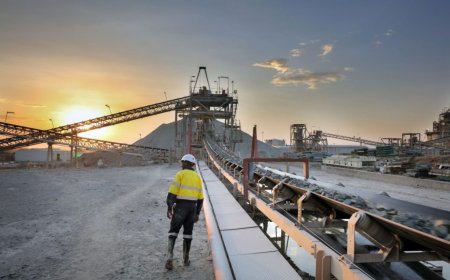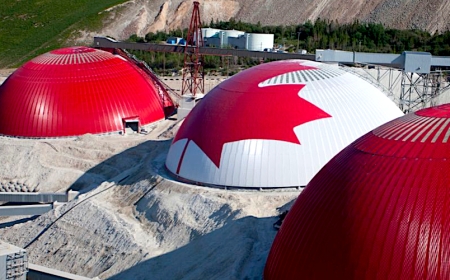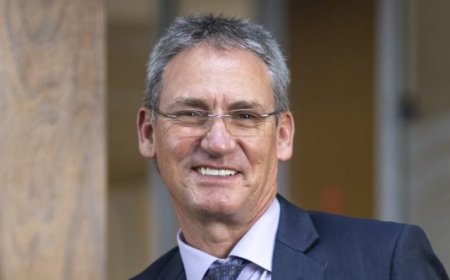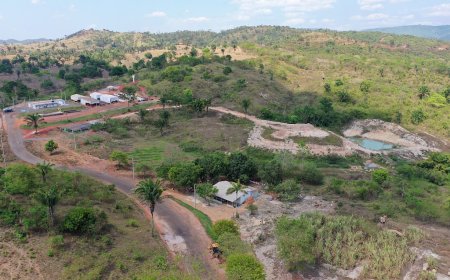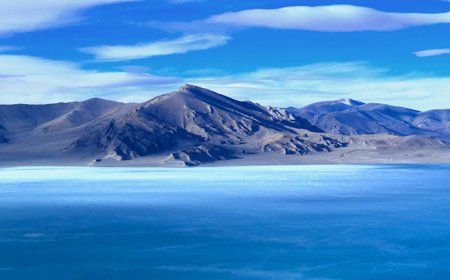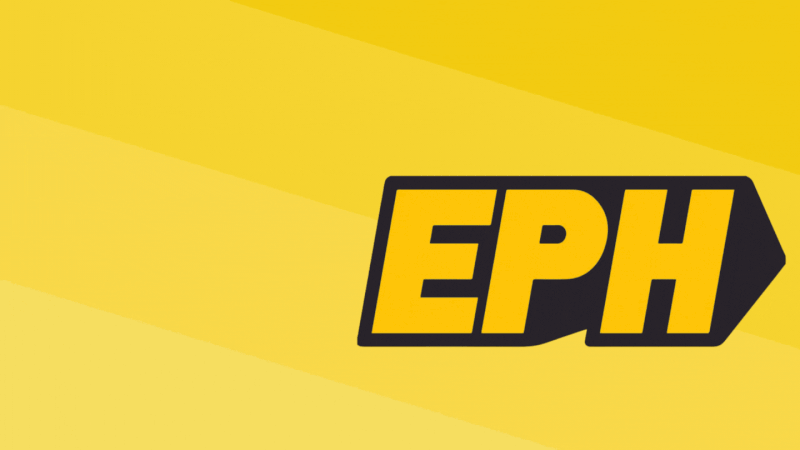Quebec Snapshot: Eight companies exploring for gold and battery metals
Canada’s largest province by land mass hosts mineral-rich deposits in undeveloped remote areas as well as projects connected to the southern road network. Here’s a glimpse of eight companies advancing gold, lithium and battery metal projects.
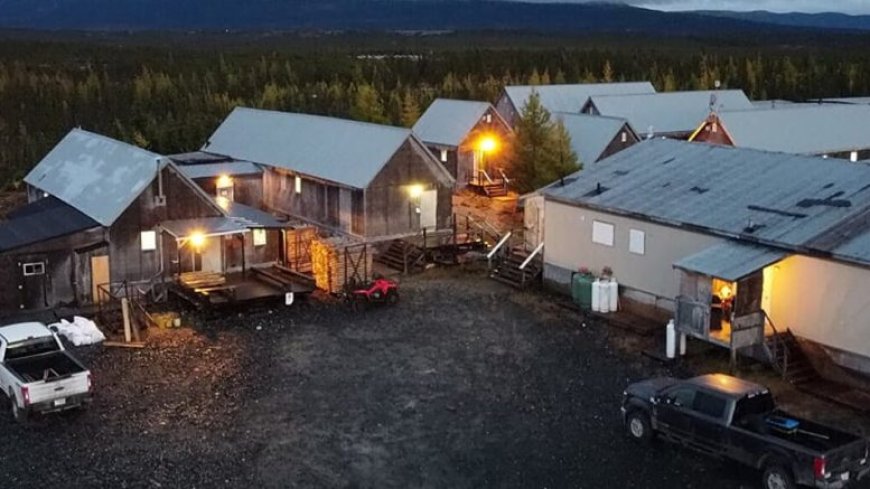

Benz Mining
Benz Mining (TSXV: BZ; ASX: BNZ) is focused on both gold and lithium. Its advanced Eastmain gold project, along the Upper Eastmain greenstone belt, is about 800 km north of Montreal. Eastmain sits on the site of a 1969 discovery developed into a mine by MSV Resources that was only active during 1995. It produced 40,000 oz. then closed due to low metal prices and poor access via an ice road.
Benz agreed in 2019 with what is now Fury Gold Mines (TSX: FURY) to acquire all of the project for $5 million in staggered payments and $3.5 million in exploration spending over four years which ends in October.

The site, now linked to all-weather road Route 167, holds 1.3 million indicated tonnes grading 9 grams gold per tonne for 384,000 oz. contained metal, according to a resource update released in May. It has 3.8 million inferred tonnes at 5.1 grams for 621,000 oz. gold.
In July, Benz declared new discoveries on the Suzanna and Michel prospects that extend mineralized zones up to 10 km along strike from the former Eastmain mine. Drill hole EM22-272 at Michel cut 4.9 metres at 7.5 grams gold and 1.9% copper from 76.7 metres depth. Hole EM22-260 at Suzanna returned 3.4 metres at 9.3 grams gold from 264.1 metres down hole.
Benz began a similar earn-in agreement with Fury in 2020 for the Ruby Hill lithium project, 50 km east of Eastman, for $1.9 million plus $795,000 in cash or shares.
The company has a 4,000-metre fall drill program planned for the site, which boasts two pegmatite outcrops announced in August along a 25-km-long trend the company is exploring. It’s analyzing grab samples of the M-2 outcrop, 2 km west of the Mikisiw pegmatite that has shown grades of up to 5% lithium oxide.
Benz Mining has a market capitalization of $64.6 million.
Comet Lithium
Comet Lithium (TSXV: CLIC) began exploring its Liberty property about midway between James Bay and Labrador in August.
The company, formerly known as X-Terra Resources, is betting on Liberty’s location between Loyal Lithium’s (ASX: LLI) Trieste project and Winsome Resources’ (ASX: WR1) Adina pegmatite trend. Loyal said in August it discovered five spodumene-bearing pegmatite dykes in high metamorphic rocks derived from sediments that define a new lithium mineralization trend about 10 km from the Liberty property line. It shows valuable pegmatites can be found outside of the known Adina trend, Comet said.
Comet is focused on prospecting and sampling of frost heave rocks, glacial boulders and rock surfaces to see if there is an extension of the Adina trend onto Liberty.
The team covered 536 km in August or more than 90% of the ground, where it identified and sampled pegmatite veins in outcrop as well as in large sub-crop glacial boulders and erratic blocks. All 205 rock samples collected at Liberty were bound for laboratory analysis.
The exploration program’s second phase is a soil survey in September to help identify drill targets.
“We are very encouraged by our early findings along strike with Winsome’s Adina pegmatite known trend,” Sylvain Champagne, Comet Lithium’s interim CEO and president, said in a release. “The company is also evaluating with service providers the possibility to begin a gravity survey on the Liberty property.”
Comet Lithium has a market capitalization of $7.1 million.
Eureka Lithium
Eureka Lithium (CSE: ERKA; US-OTC: SCMCF), with the technical advice of veteran prospector Shawn Ryan, has begun exploring this year on three projects across 1,400 sq. km in the province’s Nunavik region. Drilling was to start in August and September.
“We’re following the science here and it’s extremely compelling,” Ryan said in a company presentation. “Nunavik is virgin territory, never previously explored specifically for lithium, and this massive area comprising the top third of Quebec could prove to be the haystack of mineralized lithium systems in all of Canada.”
The 229-sq.-km Raglan South project features a 20-km-long, 15-km-wide lithium geochemical anomaly based on historical lake sediment samples. It is flanked by a Bouger gravity low, which may indicate an intrusive system at depth, Eureka says.
Just 15 km to the north, KoBold Metals, funded in part by billionaires Bill Gates, Jeff Bezos and Richard Branson, is drilling for battery metals on its 929-sq.-km property. Raglan South lies 80 km southwest of Glencore’s (LSE: GLEN) Raglan nickel mine near Quebec’s northern tip.
Eureka is analyzing 61 rock samples from the 443-sq.-km Raglan West project, about 120 km northwest of Raglan South. Sampling focused on 24 pegmatites, with many of those in mafic rocks ranging from metabasalts to metadiorites, the company said.
About 350 km south of Raglan South, the 736-sq.-km New Leaf project holds several blocks, including the Zig Zag property. Zig Zag was originally staked over an anomalous northwest trending structure associated with high lake bottom sediment values, Eureka said. It’s analyzing 83 rock samples from New Leaf.
Eureka Lithium has a market capitalization of $35.9 million.
FE Battery Metals
FE Battery Metals (CSE: FE; US-OTC: FEMFF) is continuing drilling and sampling across its Augustus lithium project near the Val-d’Or mining hub and in the same geology as Sayona Mining’s (ASX: SYA) North American Lithium mine.
In August, FE Battery reported a channel sample of 14.7 metres grading 1.15% lithium oxide (Li2O) from outcrop 26. It also returned 181 parts per million (ppm) beryllium, 41.7 ppm cesium, 75.8 ppm niobium, 1,413 ppm rubidium and 49.3 ppm tantalum. One grab sample from Augustus returned 1.9% Li2O.
Closer to Sayona’s mine, outcrop 900 cut 10 metres at 0.5% Li2O with 139.3 ppm beryllium, 74.41 ppm cesium, 57.02 ppm niobium, 1,932 ppm rubidium, and 37.6 ppm tantalum. FE Battery says it plans to drill the area this year after finishing drilling work at the main Augustus prospect.
FE Battery has completed 68 diamond drill holes for more than 15,000 metres on the 270-sq.-km property.
Earlier in August, it reported that 11 of 26 samples collected from Augustus East pegmatites near Sayona’s mine showed more than 1% Li2O and two were more than 2% Li2O with a maximum of 2.6% Li2O. The sampling was aimed at locating new lithium pegmatites and extending the Beluga prospect.
In northwestern Ontario, FE Battery holds the 9.6-sq.-km Falcon Lake lithium property about 325 km north-northeast of Thunder Bay; the 24.8-sq.-km North Spirit lithium property about 175 km north of Red Lake; and 180 sq. km of claims in the Georgia Lake area 180 km northeast of Thunder Bay.
FE Battery was spun out of First Energy Metals in October when the parent company consolidated shares in a 3.8:1 ratio. Past incarnations involved Agave Silver, which had interests in Ontario, British Columbia and Mexico, and Mexico-focused Cream Minerals. Gurminder Sangha became CEO in 2018.
FE Battery Metals has a market capitalization of $22 million.
Fury Gold
Fury Gold Mines (TSX: FURY; NYSE-AM: FURY) restarted drilling activities at its flagship Eau Claire project in the James Bay region of Quebec in July following a wildfire-driven evacuation in June.
The company’s planned 15,000-20,000-metre drill campaign will expand known mineralized zones and advance early-stage exploration targets.
Fury’s goals include expanding the high-grade Eau Claire resource, following up on its Percival prospect, and advancing early-stage exploration targets along the Cannard Deformation Zone.
At the Western Hinge target area, Fury’s updated geological interpretation of the controls on mineralization within the Eau Claire resource focused on the fold geometry at the Hinge target in 2022. That resulted in an overall increase of about 25% to the mineralized footprint.
The 2023 exploration program at Hinge also seeks to expand the mineralized footprint further to the west and up-dip and to decrease the drill spacing to 70-80 metres.
Meanwhile, the Percival prospect is 14 km east of the Eau Claire deposit and lies along the Cannard Deformation Zone.
The Percival gold mineralization is currently defined by a 500-metre by 100-metre footprint with high-grade gold extending to 300 metres below the surface.
The 2023 Percival program explores the western and down dip extensions of identified high-grade gold mineralization within a steeply west plunging fold hinge.
The Cannard Deformation Zone is significant in controlling the distribution of known gold occurrences over its more than 100-km mapped extent.
The 2023 program aims to advance several known gold and multi-element geochemical anomalies to the drill-ready stage through systematic, disciplined exploration.
Bryan Atkinson, SVP Exploration of Fury, noted that the company has better understood the controls on gold mineralization across the Eau Claire project area through the initial 50,000-metre drill campaign.
The 240-sq.-km Eau Claire project is about 150 km east of James Bay and 800 km north of Montreal. It is 57 km from Newmont’s (TSX: NGT; NYSE: NEM) Éléonore mine and 10 km from the Eastmain hydroelectric power reservoir.
According to a preliminary economic assessment (PEA) completed in 2018, Eau Claire holds a measured resource of 574,000 tonnes grading 6.6 grams gold per tonne for 123,000 oz. from the open-pit portion. The underground operation’s measured resource was 332,000 tonnes grading 6.56 grams gold for 70,000 oz. contained metal.
Fury Gold has a market capitalization of $74.2 million.
MAX Power Mining
In late August, MAX Power Mining (CSE: MAXX; US-OTC: MAXXF) resumed a high-resolution heliborne radiometric and magnetic survey covering the Corvette Lake North and Corvette Lake South properties in James Bay following wildfire disruptions.
MAX Power started the survey in late June, and work was paused shortly after that due to forest fire restrictions in the region. Its lithium properties in Quebec are close to Patriot Battery Metals’ (TSXV: PMET; ASX: PMT) Corvette deposit.
At the end of June, MAX had outlined several radiometric anomalies at and around the newly identified Shoreline Zone from preliminary airborne survey data covering about two-thirds of Corvette Lake North.
The company sent a team to Corvette Lake North Survey to investigate the anomalies. According to CEO Rav Mlait, Corvette Lake North and South have become increasingly interesting to the geological team in recent months based on reviews of historical data and preliminary interpretations from the early part of the airborne survey.
This summer, the region has seen significant exploration activity in the area, including the entrance of Rio Tinto (NYSE: RIO; LSE: RIO; ASX: RIO) on claims next to MAX Power, and investment by Albemarle (NYSE: ALB) into Patriot Battery Metals.
MAX has also partnered with the University of California Lawrence Berkeley National Laboratory, specifically renowned research scientists Dr. Brett Helms and Dr. Michael Whitaker, to develop state-of-the-art direct lithium extraction technologies for brine resources.
MAX Power Mining has a market capitalization of $28.5 million.
Orford Mining
A day after completing its 2023 field activities on Aug. 29, Orford Mining (TSXV: ORM) announced it has discovered two new quartz vein gold systems, Gerfaut East and Central Intrusive, and a new copper showing at Esperance on its Qiqavik gold property.
Orford has completed drilling on the new quartz vein gold systems and channel sampling on the copper showing and at press time was awaiting assay results.
Located in the Nunavik region, the 100%-owned Qiqavik property hosts high-grade gold occurrences at surface across its more than 40 km breadth in multiple project areas.
The 2023 work focused on drilling, geophysics, and prospecting on the belt’s Gerfaut East, Central, Annick and Eric project areas.
The company completed 34 rotary air blast holes for 2,435 metres of drilling and 32 line-km of ground-induced polarization surveys.
Orford is awaiting results from 88% of the 2,620 samples from drilling and the 233 surface samples collected.
According to CEO David Christie, Nunavik hosts “some of the best geology for mineral deposits in the world and is vastly underexplored.”
Orford also recently completed a first-pass exploration program on its wholly owned Nunavik lithium properties, which entailed prospecting and ground truthing a 529-sq.-km prospective land package. The exploration included prospective lithium-cesium-tantalum dykes identified from remote sensing data.
Since July, Orford has added 21 sq. km of new lithium claims or an increase of 4% in area.
Orford Mining has a market capitalization of $21 million.
Troilus Gold
Troilus Gold (TSX: TLG; US-OTC: CHXMF) recently completed its summer drill program at the X22 Zone of its Troilus project in north-central Quebec.
X22 is a mineralized orebody identified in late 2022 that starts at the Z87 open pit and extends to the southwest into the Gap Zone, which has been rapidly defined and expanded a high-grade northeast-southwest deformation corridor.
Drilling to date has demonstrated a continuously mineralized system between the high-grade trends of this zone.
The occurrence of exceptionally high grades at X22 is also of note, as the zone accounts for less than 7% of total drilling executed at Troilus, but from which 60% of assay results have grades greater than 100 grams gold equivalent per tonne.
A Sept. 7 news release marked the release of the final set of drill holes from the X22 definition drill program and the data cut-off to be included in an upcoming resource estimate.
Critically, all the results lie outside the PEA pit shells and will be included in the expected resource update in the coming weeks.
The site holds 177.3 million indicated tonnes grading 0.9 gram gold equivalent per tonne (0.8 gram gold, 0.1% copper, 1.8 grams silver) for 5 million oz. gold equivalent (or 4.3 million oz. gold, 322.6 million lb. copper and 6.7 million lb. silver), according to a 2020 resource estimate.
Troilus Gold has a market capitalization of $82.9 million.
